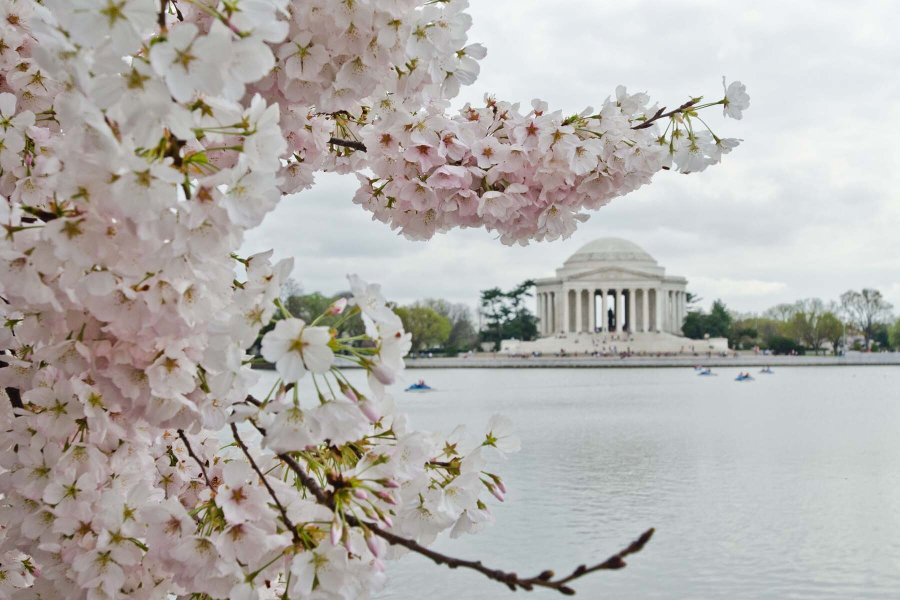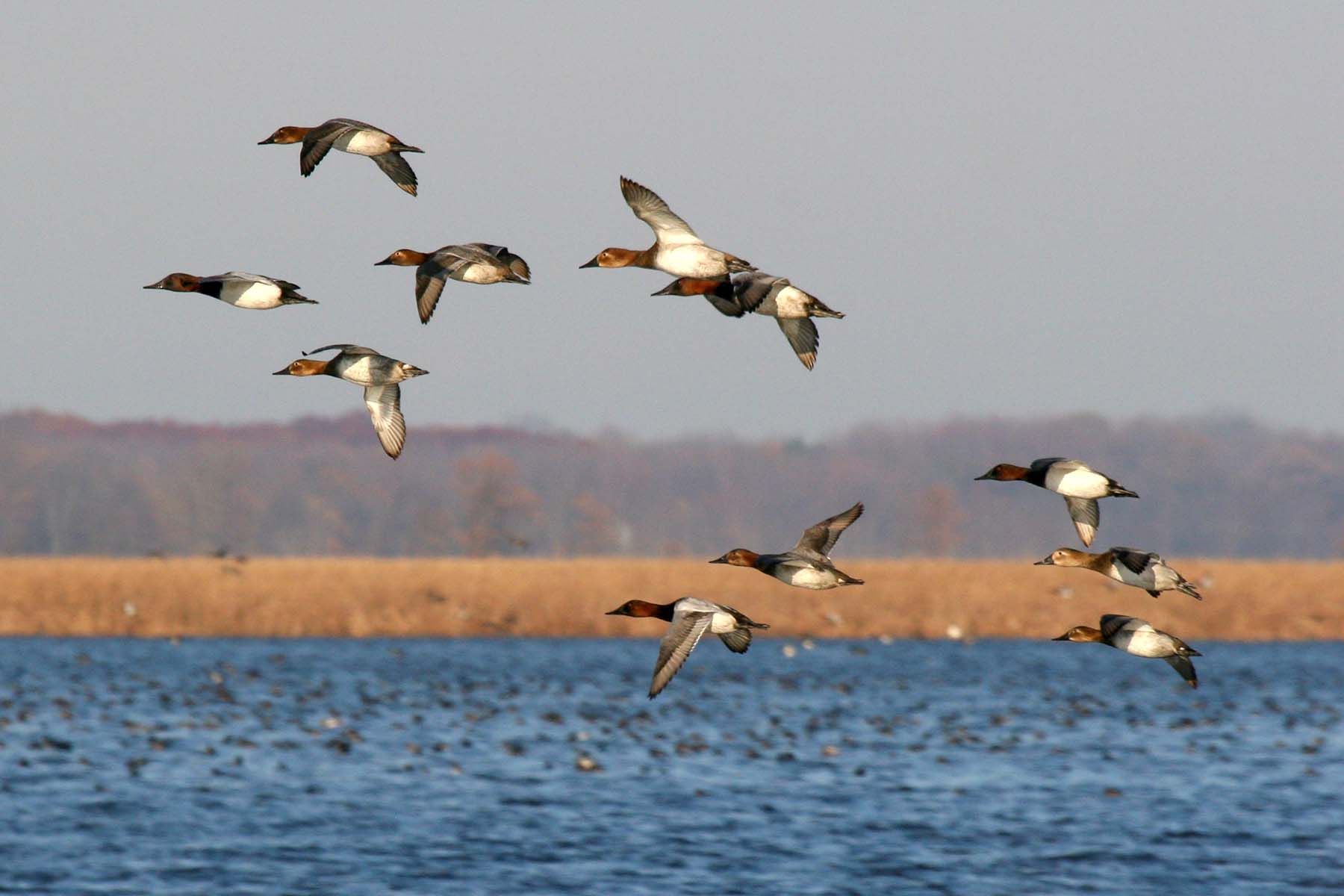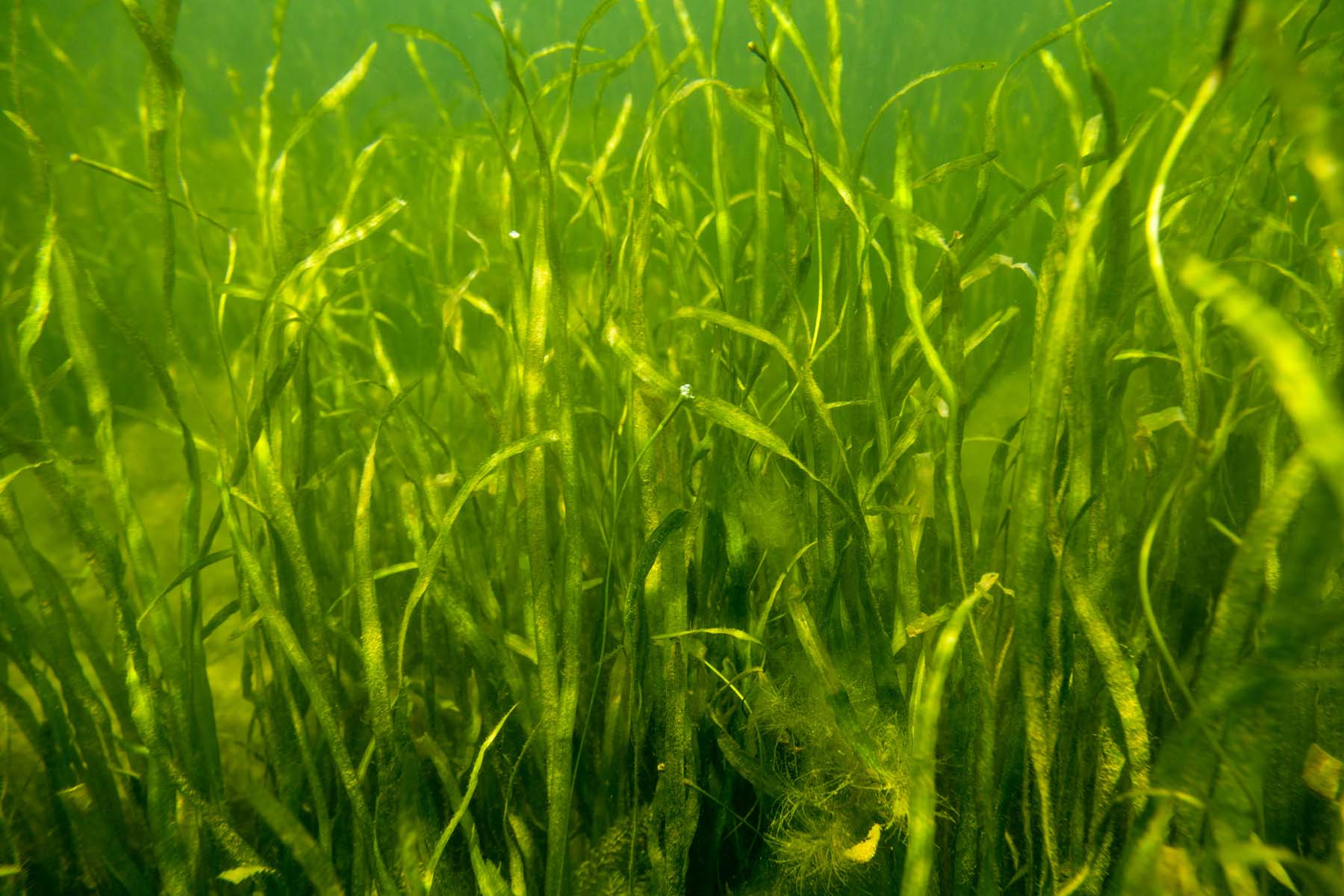How six Chesapeake species are responding to a changing climate
Rising temperatures, extreme weather have already begun affecting plants and animals in the Bay region

As one of the most vulnerable regions in the nation to the effects of climate change, all aspects of life in the Chesapeake Bay watershed—from people and critters, to habitat and infrastructure—are at risk from its effects. Warming air and water temperatures, sea level rise and extreme weather events are expected to have a significant influence on the Bay region in the coming years, but many changes are already being documented. With recent record-breaking high temperatures, including last year and the first quarter of this year, some species are feeling the heat.
1. Cherry blossoms. Thousands of iconic cherry trees surround the Tidal Basin and national monuments of Washington, D.C., and their blossoms bring countless visitors to the area. Over the past 90 years, cherry blossoms have been blooming earlier, due in part to increasing average seasonal temperatures. Since 1921, Washington’s average March temperatures have warmed more than two degrees Fahrenheit, leading “peak bloom” for the cherry blossoms to shift five days earlier.
2. Chickadees. Two strikingly similar types of chickadees are common in backyards through the United States: in the Southeast, the Carolina chickadee is most common, while the black-capped chickadee dominates the northern states. A narrow band of overlap, called the “hybrid zone,” is where the two chickadees meet and interbreed—and it has been steadily moving northward as temperatures rise. According to one study, the zone has been shifting nearly 0.7 miles each year, moving a total of 7 miles in the past ten years.

3. Migratory waterfowl. The Bay region is a key stop for millions of migratory waterfowl during their seasonal flights. But milder winters have caused several bird species to visit in smaller numbers. Many canvasbacks have been stopping short along their migrations due to warming temperatures. Some tundra swans have been wintering on open rivers in Canada rather than the shallow waters of the Bay. These changes in waterfowl migrations can take a particular toll on recreational hunters, who are seeing fewer birds migrate through the region later in the season.
4. Fish. Nearly 350 species of finfish swim through the rivers, streams and open waters of the Bay region, and many of these species are particularly sensitive to changes in water temperature. Research suggests that the temperature at which native and migratory fish begin to spawn or migrate (typically 15 degrees Celsius) is occurring nearly three weeks earlier than it did in 1960. In particular, the black sea bass has been rapidly moving its range northward; communities in North Carolina who have typically caught a majority of the black sea bass catch have recently been traveling as far north as New Jersey to meet their quotas.

5. Bay grasses. Underwater grasses are a critical part of the Bay ecosystem, providing food and shelter for some of the Bay’s most iconic species, including young blue crabs. Bay grasses are particularly sensitive to excess rainfall and changes in temperature, meaning warming temperatures and more frequent, more extreme weather events are impacting their health. High temperatures during a 2005 heat wave are blamed for a massive die-off of eelgrass in the Bay, and while many areas have rebounded from the collapse, some eelgrass beds have not yet recovered.
6. Pine beetles. A changing climate doesn’t just affect the iconic, treasured species of the Bay region—it also make it easier for invasive species and pests, like the southern pine beetle, to move in. No bigger than a grain of rice, these beetles burrow under a tree’s bark and consume a layer of the tree, which disrupts the flow of nutrients and typically kills the tree in less than four months. Historically, the beetles were unable to survive north of Delaware. But warming temperatures, especially in the winter months, have allowed the pest to migrate northward along the East Coast, reaching as far as New York.
As environmental conditions continue to change, even more species will be threatened by rising seas, warming temperatures, extreme weather and habitat loss. Under the Chesapeake Bay Watershed Agreement, Bay Program partners are committed to building the climate resiliency of the animals, plants, habitats, infrastructure and communities throughout the region.
For more on what you can do, Take Action.

Comments
Hello! I am doing a school research project on factors that negatively affect the Chesapeake Bay and I was wondering if you could answer a few questions.
1. Out of all the different invasive species that affect the Bay, which one do you think caused/will cause the most harm?
2. Will climate change ever slow down or will it continue the way it is?
Thank you!
Your comment has been received. Before it can be published, the comment will be reviewed by our team to ensure it adheres with our rules of engagement.
Back to recent stories